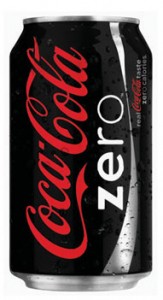
Mortgage Broker and Climate Change Guru?
Following on from an article published on Warm Home Cool Planet a couple of weeks ago on mandatory Energy Audits in Austin, TX, we have noticed a growing movement amongst the real estate industry targeting the ‘Cap and Trade’ bill and any local ordinances that might obligate homeowners into performing an energy audit on their home or making energy improvements in their home before they sell.
Here’s one from Brian Brady ‘America’s No. 1 mortgage broker’: “Sadly, the theory of carbon dioxide emissions’ effect on climate change is accepted as fact by our politicians without rigorous examination of its merits. It’s easy to turn a blind eye on faulty legislation when it attacks “big business”. Cap and Trade, however, is much more restrictive than its supporters would have you believe. Your neighbor’s penchant for bay windows and your desire for key-lime green bathroom walls might just be at stake. ”
As in all cases where people attempt to sow doubt on the accepted fact of climate change, it’s important to consider the source of these opinions. It’s also worth mentioning that the scientific community, not politicians, are responsible for deciding what is scientific fact.
Mortgage brokers make their money from arranging mortgages for people who aren’t considered good risks by banks. (Which describes at least 50% of Americans at the moment.) The mortgage broker assumes the risk of the loan for a premium on the prevailing interest rates (usually in the form of ‘points’). Mortgage companies then package up these loans and sell them to banks so they can be traded as financial instruments like CDO’s (Collateralized Dept Obligations) which in large part were responsible for the near collapse of our financial system last fall.
Mr. Brady’s business suffers if anything gets in the way of him writing another mortgage and stuffing more dodgy paper into our already teetering financial system. To prevent that from happening, Mr. Brady has hauled the “man’s home is his castle’ trope out of the cupboard and dusted it off. According to Mr. Brady soon ‘the socialists will be invading your home and telling you how many light switches you can have’.
As a recent home seller (and potential home buyer) I can assure readers that the marketplace is already factoring energy efficiency into the price of homes. Anyone seriously considering buying our Central Square home asked our broker for recent energy bills so they could figure out what their total house expenses would be each month. A gas boiler tune-up performed the previous winter, and an Energy Star-rated air conditioning system resulted in our home energy bills comparing favorably to other homes with a similar square footage. As a result our home was sold.
Given his connection to the real-estate industry, Mr. Brady should know that potential home buyers are already performing something close to an energy ‘audit’ on every home they are considering for purchase. Local municipalities are simply reacting to current market trends and ensuring that everyone gets the information needed before they make a home buying decision.





